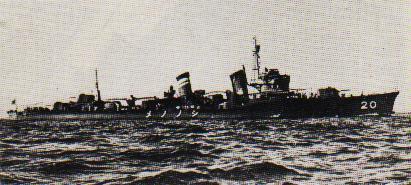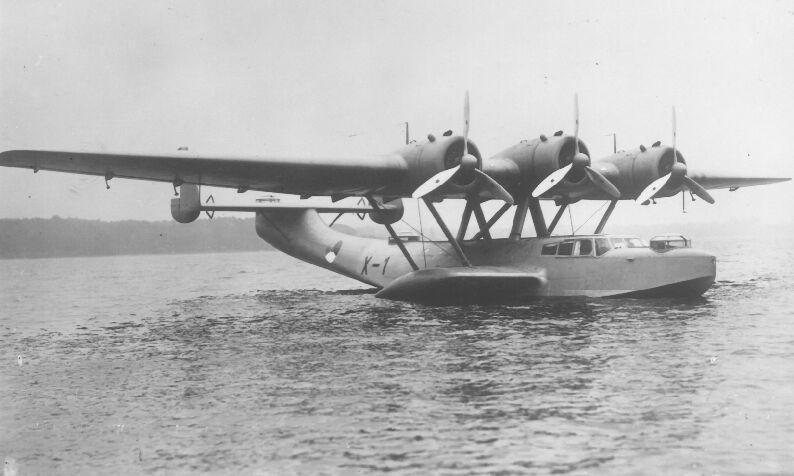Who sank IJN destroyer Shinonome, December 1941?
 The IJN destroyer Shinonome (1,950 tons) was a powerful ship, completed in 1927 as one of the Fubuki Class fleet destroyers. At the outbreak of war in the Pacific, she was under command of Commander Hiroshi Sasagawa. His ship had been assigned to Destroyer Division 12 under the command of Commander Nobuki Ogawa, which was initially deployed as escort for the valuable troop transports steaming towards the virtually unprotected shores of Malaya Peninsula. On December 16, she left Cam Ranh Bay (French Indochina) for Miri, British North Borneo, together with the other two ships of Destroyer Division 12, the IJN destroyers Shirakumo and Murakumo, the light cruiser Yura, the seaplane depot ship Kamikawa Maru, a few sub-chasers and two minesweepers. In addition, a cover force (Rear-Admiral Takeo Kurita) with two heavy cruisers Kumano and Suzuya, a light cruiser Kinu and the destroyer Fubuki were sent out as reinforcement. The invasion fleet reached Miri in the night of 15 and 16 December 1941, where the troops went ashore almost unopposed. The 2,500 men of the Kawaguchi Detachment were able to capture Miri and Lutong without much fighting.
The IJN destroyer Shinonome (1,950 tons) was a powerful ship, completed in 1927 as one of the Fubuki Class fleet destroyers. At the outbreak of war in the Pacific, she was under command of Commander Hiroshi Sasagawa. His ship had been assigned to Destroyer Division 12 under the command of Commander Nobuki Ogawa, which was initially deployed as escort for the valuable troop transports steaming towards the virtually unprotected shores of Malaya Peninsula. On December 16, she left Cam Ranh Bay (French Indochina) for Miri, British North Borneo, together with the other two ships of Destroyer Division 12, the IJN destroyers Shirakumo and Murakumo, the light cruiser Yura, the seaplane depot ship Kamikawa Maru, a few sub-chasers and two minesweepers. In addition, a cover force (Rear-Admiral Takeo Kurita) with two heavy cruisers Kumano and Suzuya, a light cruiser Kinu and the destroyer Fubuki were sent out as reinforcement. The invasion fleet reached Miri in the night of 15 and 16 December 1941, where the troops went ashore almost unopposed. The 2,500 men of the Kawaguchi Detachment were able to capture Miri and Lutong without much fighting.

IJN destroyer Shinonome |
The next day proved to be far less comfortable for the Japanese invasion force. In the early morning of December 17, 1941 a flight of 2 Vl.G.I, operating from Singkawang II airbase, found several Japanese ships near Miri. That same morning the 1st "Patrouille" (Flight Commander Van den Broek) of 2 Vl.G.I attacked these ships from 4,500 meters but claimed no hits. The crews reported heavy AA fire and two of the Glenn Martin bombers returned slightly damaged [1].
In the meantime, the word of the invasion had also reached Tarakan Island on the eastern coast of Borneo, where the three Dornier flying boats of Naval Air Group GVT-7 (Marine Luchtvaart Dienst) were immediately prepared for attack. These three aircraft, (with registrations X-32, X-33 and X-34) were Dornier Do-24K's, capable of carrying a payload of 1,200 kg. They attacked in the early morning of December 17. The flying boat X-34 (Luitenant ter Zee 3e klasse A. Baarschers) never made it to Miri. He had to made an emergency landing in the jungle, while it was heading for the Japanese invasion fleet near Miri. He later reached, together with two of his crewmembers, a refugee camp at Long Nawang, only to be massacred there by Japanese troops in August 1942. The other two flying boats X-33 and X-32 were able to attack the fleet. The X-33 (Officier-Vlieger 2e klasse J.G. Petschi) attacked Japanese transport ship without succes, while X-32 (Officier-Vlieger 2e klasse B. Sjerp - unit commander) did far better. He dropped 5 bombs of 200 kg each, scoring two hits on a IJN destroyer Shinonome and a near miss. The latter apparently did most of the damage, as the target was immediately rent by a thunderous explosion, and fires broke out aboard. A few minutes later, when the smoke cleared, the waves closed over the Shinonome, who had disappeared beneath the surface, taking below its captain, Commander Hiroshi Sasagawa, and the entire crew of 228 men.

Dornier Do-24K |
After the war, a committee was formed to assess the casualties the Allied naval and airforces had inflicted to the Japanese Navy and merchant navy during the war. They reached a remarkable conclusion regarding Shinonome's loss. This warship was supposedly sunk by a Dutch mine. Although the author has little doubt about the true cause of the sinking, it is interesting to see how the committee reached this conclusion. In 1998, an article was posted on the Nihon Kaigun website, narrating the history of Destroyer Division 12 during its short career [2]. The passage about the Shinonome mentions that the Commander of Destroyer Division 12, Commander Nobuki Ogawa, thought she had been lost to a mine or an internal explosion. He nor anyone else had apparently observed the air attack by the flying boats. The Assessment Committee adopted this theory, and never gave other possibilities much thought. There may be a few reasons why the Imperial Japanese Navy thought a mine was responsible:
- There were no survivors of IJN destroyer Shinonome to account for her loss.
- The stormy weather prevented the Dutch aircraft from being sighted, and therefore caused the confusion.
I put in a few hours of research to try to find out if there were any mines in the vicinity, but I am pretty sure there were none in the area. The Dutch minelayer Prins van Oranje made a sortie to British Borneo to pick up Japanese inhabitants, but there is no record of any mine being laid. The same goes for the British Royal Navy in Singapore, which restricted her operations to the waters of Malaya.
[1] The description of this event according to P.C. Boer's excellent book "De Luchtstrijd rond Borneo":
DECEMBER 17, 1941:
After the reconnaissance report from 2 Vl.G.I, Air Headquarters ordered 1 Vl.G.I, which operated from Samarinda II airbase, to attack the same target. In the early afternoon three flights (Flight Commanders Beckman, Butner and Vrijburg) flew to Miri. When they reached the target area, they observed a burning Japanese warship. Though the crews thought that this must have been the result of 2 Vl.G.I's earlier attack, P.C. Boer credits this damaged ship to the Dorniers of Naval Air Group GVT-7, since we already saw that van den Broek's crews claimed no hits during their first raid. The first two flights (Beckman and Butner) bombarded the ships with no results ("far from near misses") but were attacked by Mitsubishi F1M fighters. One of the crews of the third flight claimed a hit on a Japanese transport but this Glenn was also attacked by F1M floatplanes, one of which was shot down. The last plane to attack the Japanese fleet was the Glenn Martin of the Flight Commander of the third flight (Vrijburg).No Japanese fighters and AA fire this time, so Vrijburg took his time to drop his two 1000 pounders on a large destroyer. They could not find back the ship after the attack and claimed it as destroyed, which was not confirmed by Air Headquarters by the way.
DECEMBER 18, 1941:
Two flights of 2 Vl.G.I (Flight Commanders Theunissen and Cooke) repeated the attack in the early morning of this day. The weather was excellent and so were the bombing results. The first flight (Theunissen) to attack scored two hits on a large transport which, according to Japanese records, was badly damaged but did not sink. Again the Glenn Martins were intercepted by F1M floatplanes but the air gunners shot down one of them. The second flight (Cooke) hit a "cruiser" and the belly gunners of the Glenns observed it as it went down. Cooke's flight was also attacked by Japanese fighters and this time the Glenn Martin M571, flown by Lieutenant Groeneveld, was shot down. Groeneveld and his crew bailed out and eventually ended up at Long Nawang (Borneo) where they were executed by Japanese troops in August 1942. P.C. Boer credits Cooke's flight with the sinking of IJN destroyer Shinonome since this attack was made near Lutong (4 24'N - 114 00'0) whereas the Dorniers made their attack near Seria (20 miles north-east of Miri).
The 1 Vl.G.I also tried to attack the Japanese fleet again later that day, but by now the weather conditions had changed completely. Only two planes managed to reach the target area but were unable to locate the ships.
[2] This is the article written by Allan Nevitt "Fleeting Glory: The Fubukis of DesDiv 12" at Nihon Kaigun. There are more errors in this article, in the passages about later operations by this division.
Note This article was written by JAN VISSER (The Netherlands). Much thanks also goes to BERT KOSSEN (the Netherlands).
Copyright © 1999-2000



